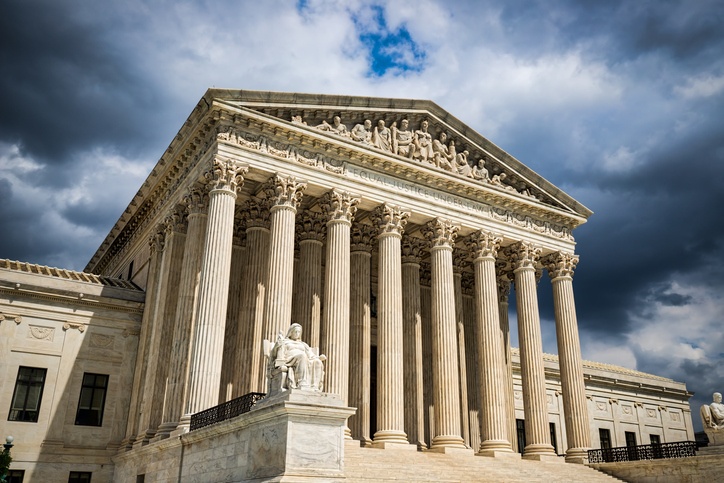
Church Executive has been following the spate of Supreme Court cases during the last few years where the Court is sorting out the ground rules for when church schools and other church affiliates are allowed to participate in government tuition and subsidy programs and when they can properly be excluded.
Drawing the right dividing line has historically been a matter of juggling the mandates of the two First Amendment “religion” clauses — the Free Exercise Clause and the Establishment Clause. The Free Exercise Clause has been interpreted to require government programs (state and federal) to treat religious entities on an equal footing with non-religious entities, as otherwise those programs are deemed to be an improper interference by the government with the “free exercise” of religion.
But the Establishment Clause has always been a counterweight, barring the government from getting into the business of “establishing” one religion over another or favoring religion over non-religion.
The obvious tension between the two clauses has led to a dizzying array of seemingly inconsistent (or at least hard-to-fathom) results as the Court has drawn the line in different factual settings. The last few years have seen an increase in the number of cases taken up by the Court as its make-up has shifted toward a majority of so-called “conservative” justices. All this is important for Church Executive’s readers as churches play an increasingly important role in their communities filling the void created by cutbacks in school and other programs; their entitlement to full participation in government programs has become more and more important.
Tapping Church Executive Guest Editor and attorney Kimberlee Norris’s expertise, we’ve been keeping an eye on the Carson v. Makin case — available here and here — where the Court agreed to review a Maine program which provides tuition subsidies for high school students to attend private schools if there is no local public high school available to them, but not if the subsidies would be used to attend a “sectarian” school offering religious instruction as part of the curriculum. Two families challenged the Maine program on the ground that it violates the Free Exercise Clause, contending that a family cannot be penalized for choosing to send a child to a church-affiliated school where religious instruction is included. That kind of hostility toward the free exercise of religion is an impermissible discrimination under the First Amendment, they argued, and tuition subsidies should be allowed regardless of any church affiliation or religious instruction. Maine countered — and the lower court agreed — that the prohibition against subsidies for a “sectarian” education was permissible (and perhaps even mandatory, to avoid violating the Establishment Clause) because a government’s “direct” support of religious education would get the government impermissibly into the business of “supporting” religion. The Supreme Court’s recent decisions in Trinity Lutheran and Espinoza were viewed by the lower court as not controlling because those cases didn’t address the “use” of government funding for a religious purpose. So, the lower court thought those decisions didn’t apply to the Maine program where government funding — if allowed — would be “used” to pay for a sectarian education and therefore would “directly” support religion.
The Supreme Court just handed down its Makin decision and reversed the lower court, saying that the Free Exercise Clause doesn’t allow Maine to withhold tuition subsidies from families wanting to send their sons and daughters to schools which include religious instruction as part of the curriculum. Chief Justice Roberts wrote the majority opinion for the so-called “conservative majority,” and the bottom line for those six Justices is crystal clear: if any government program tries to deny benefits because of a church affiliation, that denial is almost certainly going to be set aside, Establishment Clause be damned. Maybe there is still room for a denial in an egregious case — for example, if government funds were used to buy hymnals — but any such denial would be an outlier and highly suspect and subject to the closest scrutiny.
Now, we’ll almost certainly see an aggressive push in many states to expand school voucher and charter school programs to include church-affiliated schools willy-nilly and to expand other government subsidy programs to allow support of church activities, and at least some of these new programs are going to test the limits of the Makin majority’s ground rules. We also might see the Supreme Court reach out to take on more cases testing the ongoing viability of some of its Establishment Clause precedents — for example, in the context of school prayer, gay rights, birth control and other hot-button issues. The tug of war between the Establishment Clause and the Free Exercise Clause now seems to be shifting, as the Free Exercise Clause looks to be on a roll and winning the battle at the Supreme Court.
Stay tuned and fasten your seat belts, as there are mega-changes ahead which will flex the muscles of the Free Exercise Clause and weaken the constraints of the Establishment Clause.
— The Editors
Postscript: In an analogous case, the Supreme Court just ruled in favor of a high school football coach who lost his job because he prayed on the 50-yard line after games. The 6-3 division on the Court was the same as in Makin and the reasoning on both sides similar, with the majority’s bottom line being that the coach’s rights under the Free Exercise Clause (and the Free Speech Clause of the First Amendment) prevailed over the Establishment Clause.
See Amy Howe’s analysis in ScotusBlog for the details. Among other things, this decision is bound to encourage speculation about whether the Court will revisit its precedents banning school prayer.


